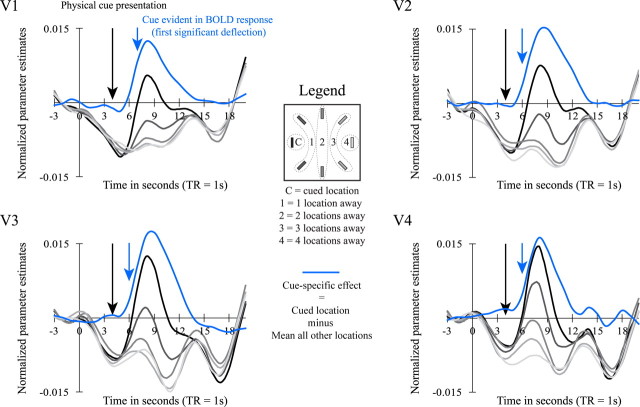Figure 3.
Effect of attention-directing cue. In 20% of the trials, we delivered a cue without presenting the memory and the test array. This was done to measure when the cue took effect during the VSTM task. The cue was presented 4 s after trial start (black arrow) and started to be evident in the BOLD response 6 s after trial start (blue arrow). The delivery of a cue had an effect that was specific to the cued location (and the immediately adjacent ones) yet was riding on top of a general decrease of the BOLD response at all locations, which is probably attributable to anticipation of the subject. The cue-specific effect (BOLD response at cued location − BOLD response at other locations) is shown in blue. All data were computed with a full deconvolution analysis and baseline corrected from 3 s until 1 s before trial start. Depicted data are the mean activity across subjects (n = 20).

